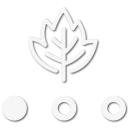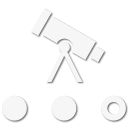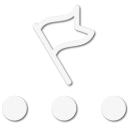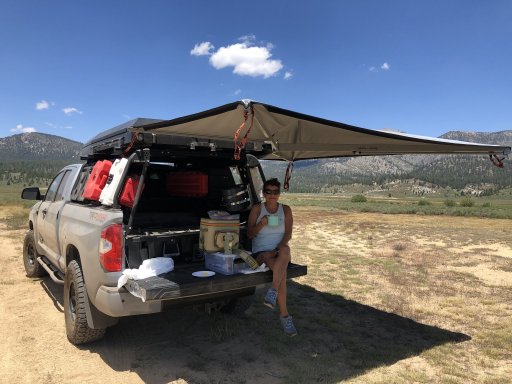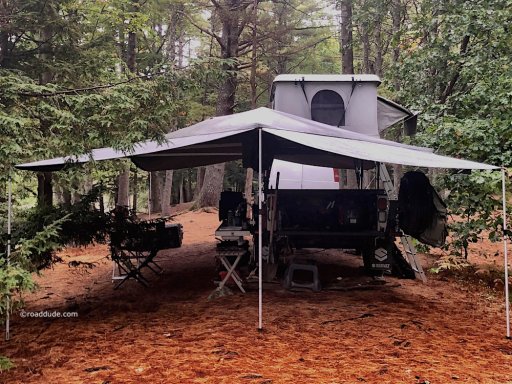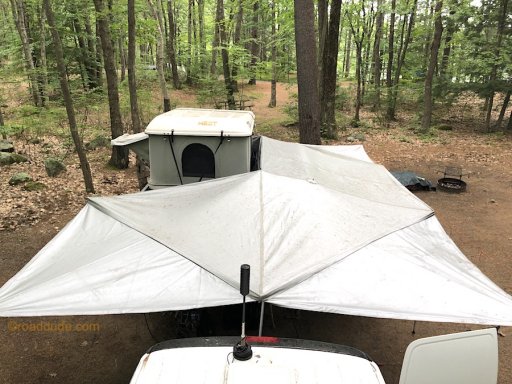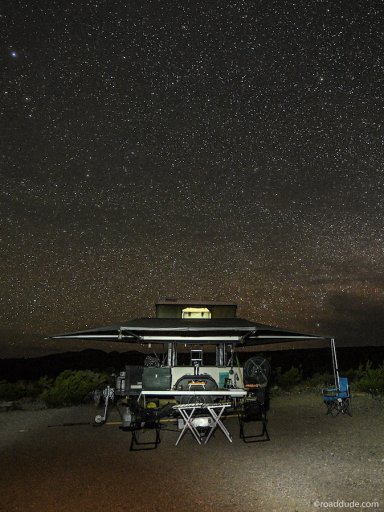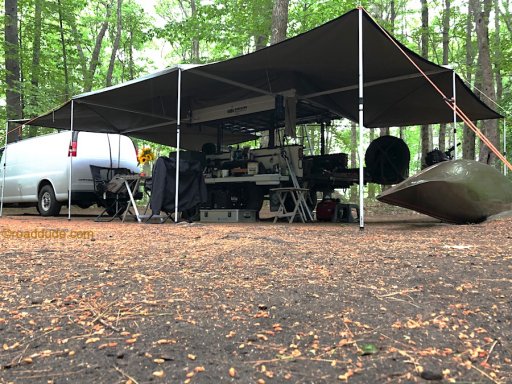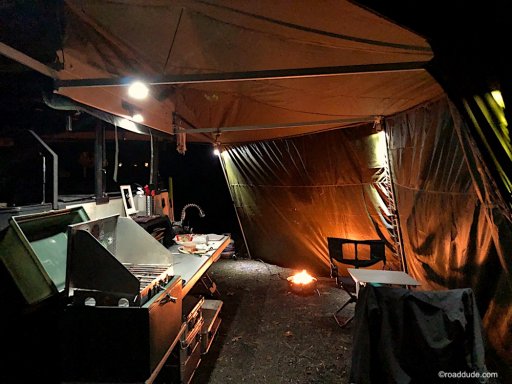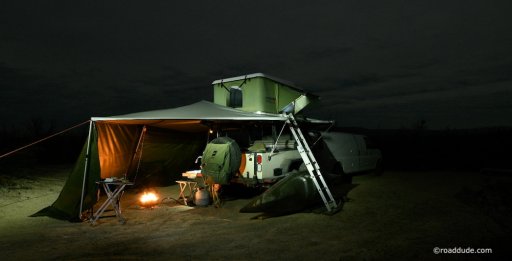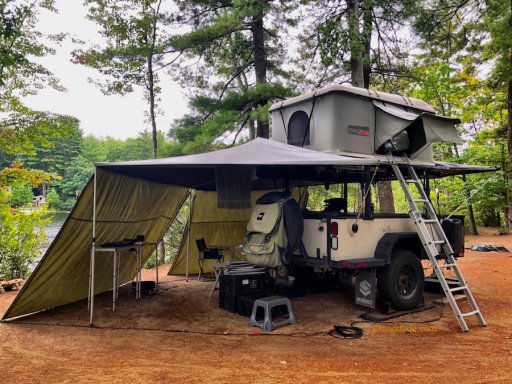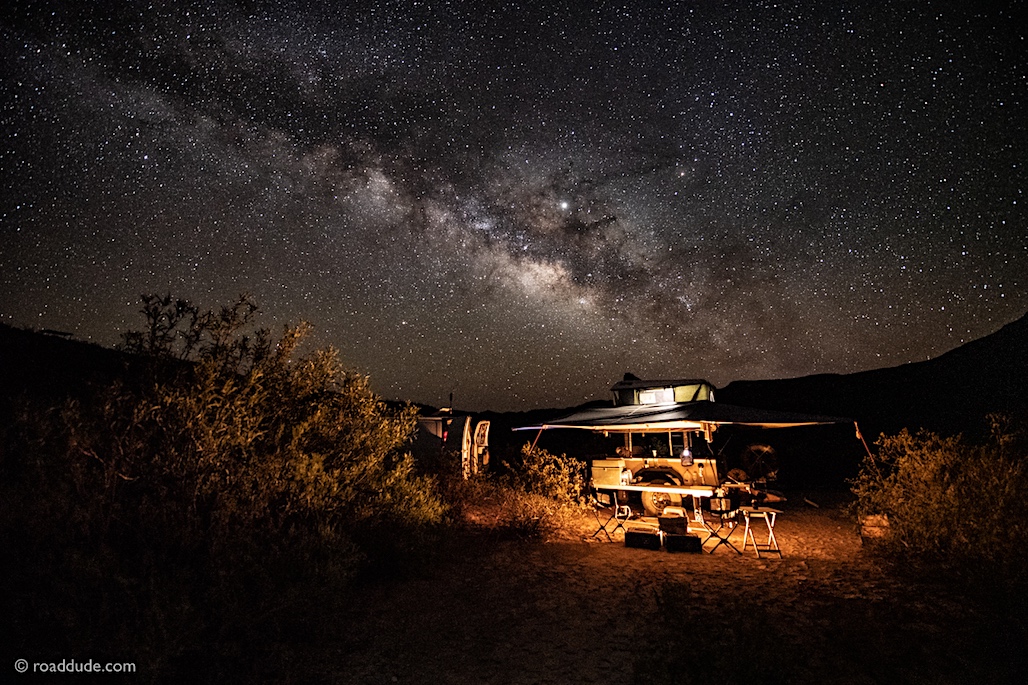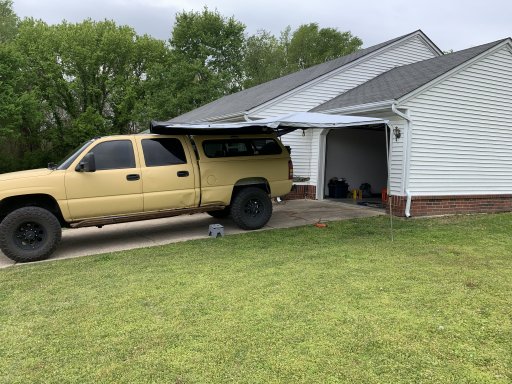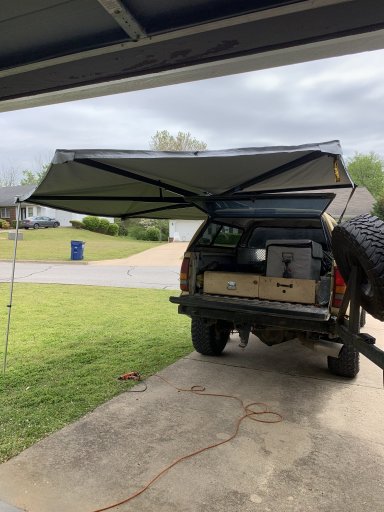.
Amount of coverage
Durability
Flexibility in adding sidewalls or extensions
Ease of operation
Not just for sun, but for rain and cold too.
I have a BAA (big-assed-awning) and love it. I've spent too much time under single sided awnings on one side of a vehicle that don't reach far enough, don't provide enough shade as the earth turns and sun is higher, lower.
I do a lot of base camping, so prefer an awning that will do what I need throughout the whole day, for several days or weeks. Mine is considered a 360, in that it wraps both ends and an entire side of whatever it is mounted to. I have mine mounted to a rack on my trailer that I raise in camp, lower for travel.
I LOVE that it provides the coverage that it does, and regularly appreciate that I have coverage over both the nose box and tailgate of my trailer, and that I can back the van's back doors right up to the awning and open them under cover.
It is quick and easy to deploy, and quick and easy to stow.
I have triangle-shaped corner extensions that attach via 2" wide HD hook & loops (rugged even in high winds) to square off each end. My side walls can attach to both the awning and extensions. The awning and corner extensions all have an aluminized resin coating on top that helps reflect, not transmit, the heat of the sun. Even in the desert with open sides, you can feel the difference just walking under it.
The corner extensions are a breeze to attach and stake out.
View attachment 191645
This config has the corner extensions added on this end. That gives me almost 16' across under cover on the end.
Without the extensions, poles are not needed. The extra weight of the large corner extensions and that they have no support arms, but just attach to the hem of the main awning, creates the need for poles. I like having the poles, actually, as it provides more stability in a wider range of weather conditions and provides also attachments points for sidewalls.
View attachment 191647
This give a better idea of how the triangle corner extensions attach and of the shape of the main awning. The other end is symmetrical to this one.
View attachment 191648
Main awning only, no corner extensions, no poles other than one at the right end, which I had up to attach a windbreak on that side the night before, and knowing I'd probably put it back up, left the pole in place.
View attachment 191646
Front side view of main awning with triangle corner extensions squaring off both ends, for close to 16' x 24' under cover.
I will sometimes back up so I know one of the rear corner extensions will be over an existing firepit, or a spot I will build a fire in my flatpack firepit, so even on a night with hard rain, I can have a fire under the awning's edge.
View attachment 191649
In this one, I'm just running my propane fire ring. Wicked handy to have in those places that do not allow ground fires of wood, firepits, etc.
One of my favorite things to do when base camping is to experiment with all these different configurations; walls straight down or flared out, open on one end or enclosed as much as possible, etc.
That's a lot of room under cover, with almost 8' out at awning level and more at foot level with the flare.
..
View attachment 191650
I'm sewing more panels; some with zippered doors for when I close things in more, some as much narrower gap fillers with HD zippers, for filling in between when I flare out the walls this much:
View attachment 191651
What I've found in experimenting so much with different configs, is that you really don't need to close it in as much as you might think to stay warm, or cool. Sometimes just a wall or two on the windward, or sunny, side works wonders in increasing comfort.
The main awning zips up nicely in its own bag on the side of the rack--quicker and easier to do than you might think, and all the corner extensions and side walls fold up into a short 15" x 15" pile. The sidewalls are of a much thinner material than the awning extensions, of course.
This kind of awning certainly isn't for everyone, and because it is bigger than many, even without the extensions (almost 8' in each direction), you need to keep an eye on it in big winds. It'll take a lot, but get out in the desert with straight line winds or in the mountains with storms that are knocking out power everywhere, and you're better off folding her up, like most any awning.
Those are the kinds of things I wanted in my awning, and poked around and explored until I found what would do what I want in as many different ways as possible. I couldn't be more pleased.
.
Roaddude - Traveling Photographer/Writer/Artist On the Road In North America. Gear, reviews, people, places, and culture.

roaddude.com


